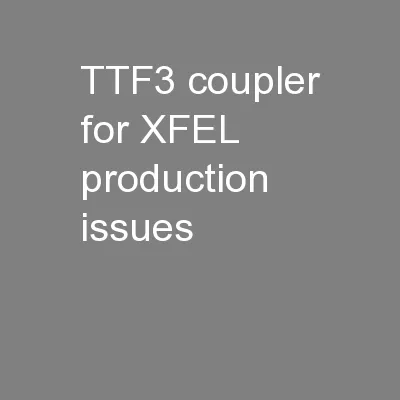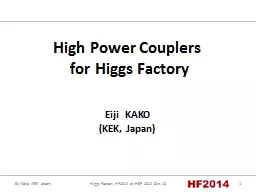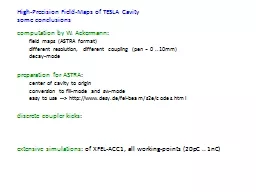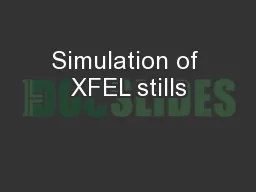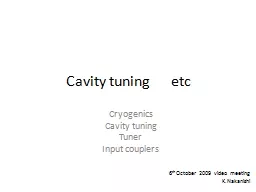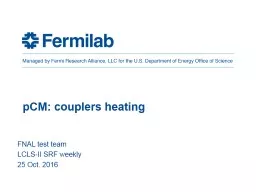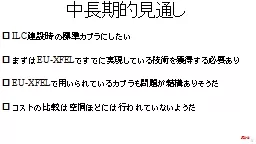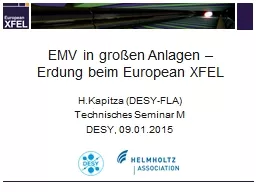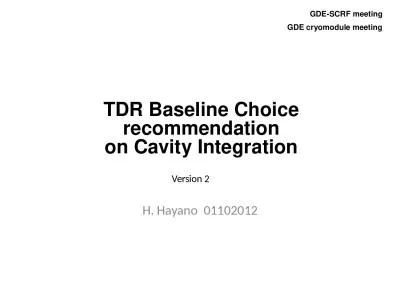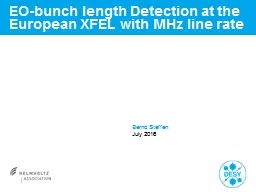PPT-TTF3 coupler for XFEL production issues
Author : pamella-moone | Published Date : 2016-03-10
Michael Pekeler RI Research Instruments GmbH FriedrichEbertStr 1 51429 Bergisch Gladbach Germany Advanced Technology Equipment and TurnKey System Supplier for
Presentation Embed Code
Download Presentation
Download Presentation The PPT/PDF document "TTF3 coupler for XFEL production issues" is the property of its rightful owner. Permission is granted to download and print the materials on this website for personal, non-commercial use only, and to display it on your personal computer provided you do not modify the materials and that you retain all copyright notices contained in the materials. By downloading content from our website, you accept the terms of this agreement.
TTF3 coupler for XFEL production issues: Transcript
Download Rules Of Document
"TTF3 coupler for XFEL production issues"The content belongs to its owner. You may download and print it for personal use, without modification, and keep all copyright notices. By downloading, you agree to these terms.
Related Documents

